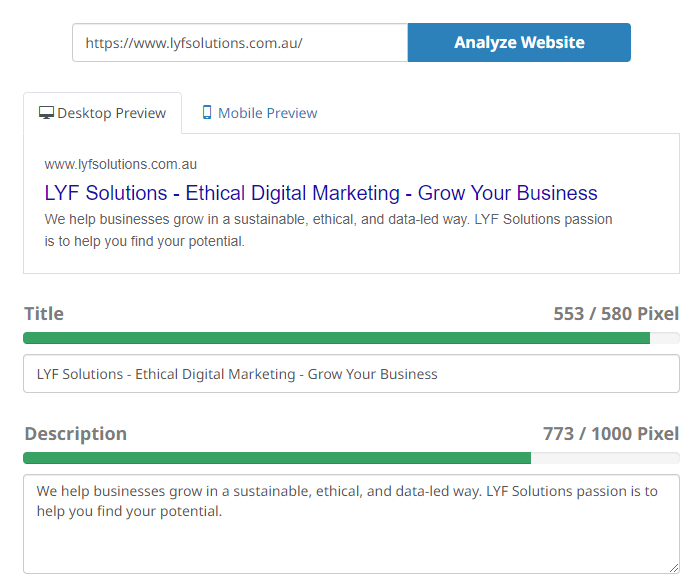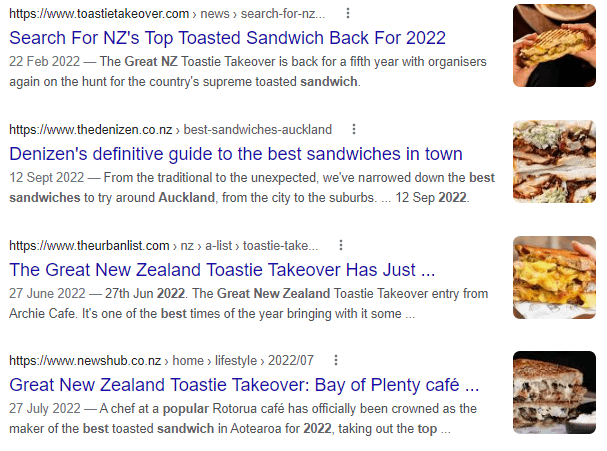Whether it’s a novel, a blog, a study, or a news item, effective titles and short descriptions should grab the readers’ attention – so much so that they cannot resist checking out the entire text you’ve just written.
A title or a headline is the amuse bouche to get them sold on your 5-course meal. In that context, the description is the menu – giving just a few more details about each dish and its ingredients.
So what are a meta title and a meta description? At their core, they follow that same principle; they draw their readers in. They give them the short version and the essence of what is to follow.
But meta titles and descriptions give you a few more options and tools to make your online content stand out and work for you.
Find out what these are and how you can SEO-proof your meta titles and meta descriptions.
What is an effective meta title?
A meta title, also known as a title tag, is the text succinctly describing the topic of a webpage. It is the text displayed on search engine results pages (SERPs); it plays a huge part in the decision-making process of whether a reader will click through to your webpage – or not.
A meta title can differ from the site’s actual name.
For example, if you search for LYF Solutions, you will likely get this search result:

By contrast, the home page reads like this:

There are a few simple points to consider when writing a meta title. You want to give it the best chance to feature prominently, rank highly on a search engine (and not get buried on pages 2+), and achieve high click-through rates.
- Make your title concise. Tell the reader what the content is about as briefly and accurately as possible. What information are they about to discover?
- Meta titles, or title tags’ should be one-offs – do not duplicate them in other pieces of content.
- Try adding your keyword early on in your title – it will help to rank higher in a keyword-based query.
- That said, remember who you write for! Don’t let SEO take over.
- Use your brand name sparingly; there’s no need for it to appear in every meta title but it should appear for your home page.
- Stay within the Google meta title length limit: the optimal length, including spaces, is between 50 and 60 characters.
Once you’ve done all that and come up with a title that will grab the reader’s attention AND help your SERP ranking, run it through a title checker.
This free Google SERP tool can help you optimise your meta title, ideally telling you that “Your page title is an acceptable length.”
If you add a meta title in WordPress, the easiest way to optimise it is with an SEO plugin.
For example, Yoast SEO will not only tell you whether your title is SEO friendly and a good length, but it will also give you a preview of how the title and description will display on mobile and desktop devices.
And to return to LYF Solutions, this is what the SEObility SERP checker tells us:

You’ll notice that in this scenario going back to our original screenshot, Google decided to use our meta title. However, for our meta description, it used one of our testimonials instead.
Good to know:
Best practice is to always add a brief, intelligible meta title for each page of your website. The meta title does have a direct relationship to search engine optimisation and ranking factors for your website to show up in people’s searches online.
If your meta title doesn’t hold enough information or you’ve not specified it altogether, you run the risk of Google automatically creating one for your webpage based on its content. And that may not always work in your favour.
What’s an effective meta description?
In a search engine, meta descriptions always appear below your webpage’s meta title. We recommend always creating one.
A compelling meta description gives readers a good summary of what they’re about to find on a webpage.
Although Google doesn’t use meta descriptions for their ranking algorithm, it uses click-through rates. So your mini description should give its readers enough detail to know they will find all the information they need on your page and get them to click through.
When writing your meta description, follow these simple rules:
- Ensure the description matches the page content and captures the information covered.
- Keep it short, at between 135 and 160 characters.
- Include the primary keyword if possible – without sounding like the SEO robot.
- Make it unique.
- Include a call to action, such as “Shop now”, “Learn more”, or “Find out.”
- Use an active voice.
Again, once you’ve written your meta description, we recommend you treat it as a draft and run it through the title tag and meta description checker.
Or, for WordPress, you can use the Yoast SEO plugin. Once you enter your primary keyword into the Focus Keyphrase section (the term you want your page to rank with), then enter your meta description, it will tell you how well your proposed text stacks up in terms of SEO algorithms. This is where getting creative with words and just tweaking one or two can make a real difference.
Good to know:
There are hundreds of other search engine optimisation ranking factors to consider. The key to your success is balancing these needs with what your audience wants.
Examples of meta titles and meta descriptions
Before we leave you to experiment and wordsmith, here are some examples of titles and descriptions.
Some of them have evident shortcomings, such as the title or description being far too long and being cut off. Some descriptions are perhaps on the bland side. Others just seem to be a long list rather than a summary.
It’s definitely interesting what a search engine spits out when looking for a humble toastie in NZ! Our winner is Denizen. Happy reading:

While making a toastie is pretty simple, if you want to know more about SEO and how to improve website traffic, let’s talk. We’ve got the expertise and all the right ingredients.














